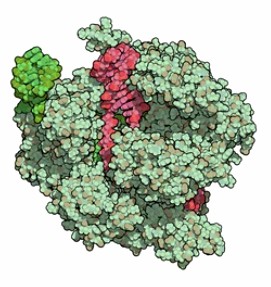Gene Therapy Formulation Nuclease Residue Testing
Inquiry
During the production of gene therapy formulations, nuclease is used to remove unwanted nucleic acids, but these enzymes may cause adverse reactions if they remain in the final product. Since the residual amount of nuclease in gene therapy formulations may have an important effect on the quality of the product, it is of great significance to test the residual amount of nuclease. CD Formulation can provide accurate and reliable nuclease residue testing services for gene therapy formulations upon request to ensure the safety and efficacy of gene therapy formulations.
The Importance of Gene Therapy Formulation Nuclease Residue Testing
Nuclease residue testing plays a critical role in the control of impurities in gene therapy formulations. Nucleases may be used during the development and production of gene therapy formulations to assist in the shearing, modification or removal of unwanted nucleic acid sequences from DNA. If these enzymes are not completely removed, they may pose potential risks in the final product, including the following.
- Immune reactions. Residual nuclease may be recognized by the patient's immune system as a foreign substance, triggering an immune response.
- Stability. Nucleases may destroy nucleic acids in the formulation, affecting the stability and efficacy of the product.
- Safety. Nuclease residues may cause toxicity or other adverse reactions in patients.
Therefore, detecting and controlling nuclease residues in gene therapy formulations is a critical step in ensuring product safety and efficacy.

Explore Our Gene Therapy Formulation Nuclease Residue Testing
Enzyme activity assay
This is a direct assay that measures the activity of a nuclease by its hydrolytic reaction to a specific substrate. Typically, enzyme activity is determined by measuring the amount of a specific product released during the reaction, e.g., monitoring the degradation of nucleic acids by measuring changes in OD260。
Nucleic acid fragmentation assay
A nuclease residue assay based on polymerase chain reaction (PCR). Nucleic acid fragments in the sample are amplified by specific primers, and then the integrity of the amplified product is analyzed by electrophoresis. The anticipated PCR product may not develop or may produce incomplete fragments if nuclease residues are present.
Nucleic acid hydrolysis gel electrophoresis
This is an electrophoresis technique for determining the integrity of nucleic acid fragments. When nuclease is present, the nucleic acid is broken down, changing the band pattern on the electrophoretic profile. The residual nuclease can be inferred by comparing the electrophoretic profiles of the sample and the control to see if the nucleic acids have been cleaved by nuclease.
High-performance liquid chromatography (HPLC)
HPLC separates and detects nucleases. By using a specific column and detector, the nuclease in the sample can be separated and quantified. HPLC method has high resolution and high sensitivity, which is suitable for the accurate detection of nuclease residues in complex samples.
Our Technologies for Gene Therapy Formulation Nuclease Residue Testing
| Platforms & Technologies |
Content Description |
| The enzyme-linked immunosorbent assay (ELISA) |
We use ELISA to analyze the total amount of non-specific nuclease residues, strictly control the CV difference and recovery results to ensure the authenticity of the experimental results, which is characterized by high sensitivity and high specificity. |
| UV spectrophotometer method |
A UV spectrophotometer is employed to evaluate the integrity and purity of nucleic acids. The breakdown of nucleic acids caused by nuclease residues may alter the OD260 value. The simplicity and quickness of this approach to nuclease residue detection make it stand out. |
| Fluorescent probe method |
We detect nuclease activity by using a fluorescently labeled nucleic acid substrate. The fluorescence signal will change after the nuclease cuts the substrate, and the activity of nuclease can be quantified by measuring the change of fluorescence intensity. This method exhibits high sensitivity and fast response time in nuclease residue testing. |
Highlights of Our Gene Therapy Formulation Nuclease Residue Testing
- Compliance. Our testing service meets the requirements of relevant organizations and uses the enzyme-linked immunosorbent assay (ELISA) method for testing with stable results and quality control.
- Save time. We provide comprehensive testing solutions for quality control of gene therapy formulations, maximizing our clients' time savings in gene therapy formulation development.
- Technical expertise. We have an advanced technology platform and an experienced technical team of experts, which can help our clients to solve the problem of nuclease residues in gene therapy formulations.
- Efficient and fast. We can detect nuclease residues efficiently and rapidly, and provide customized solutions to best meet our clients' research needs.
Published Data
Technology: Gene editing
Journal: Yale J Biol Med
Published: 2017
The article discusses inherited metabolic diseases (IMDs) of the liver, which are rare genetic disorders caused by dysfunctional enzymes or proteins critical for liver metabolism. Conventional gene therapy using adeno-associated virus (AAV) serotype 8 vectors has shown promise in pre-clinical studies and is being tested in clinical trials for various IMDs. However, challenges such as insertional mutagenesis, immunogenicity, and efficacy limitations hinder the effectiveness of the AAV system. In contrast, genome editing technologies like CRISPR/Cas9 present significant advantages, potentially enhancing gene therapy outcomes. The article critically evaluates both gene therapy and genome editing methods for treating key liver disorders, including familial hypercholesterolemia, hemophilia, and alpha-1 antitrypsin deficiency, while also addressing existing challenges and future research directions for novel gene therapies targeting IMDs.
CD Formulation relies on an advanced technology platform and a team of experienced experts to provide professional quality control testing services for gene therapy formulations. We have a strict quality control system, advanced and reliable testing methods to support nuclease residue testing of gene therapy formulations to ensure the safety and efficacy of gene therapy formulations. If you are interested in us, please feel free to contact us.
References
- Bryson TE, et al. Nuclease-Mediated Gene Therapies for Inherited Metabolic Diseases of the Liver. Yale J Biol Med. 2017, 90(4):553-566.
Related Services


